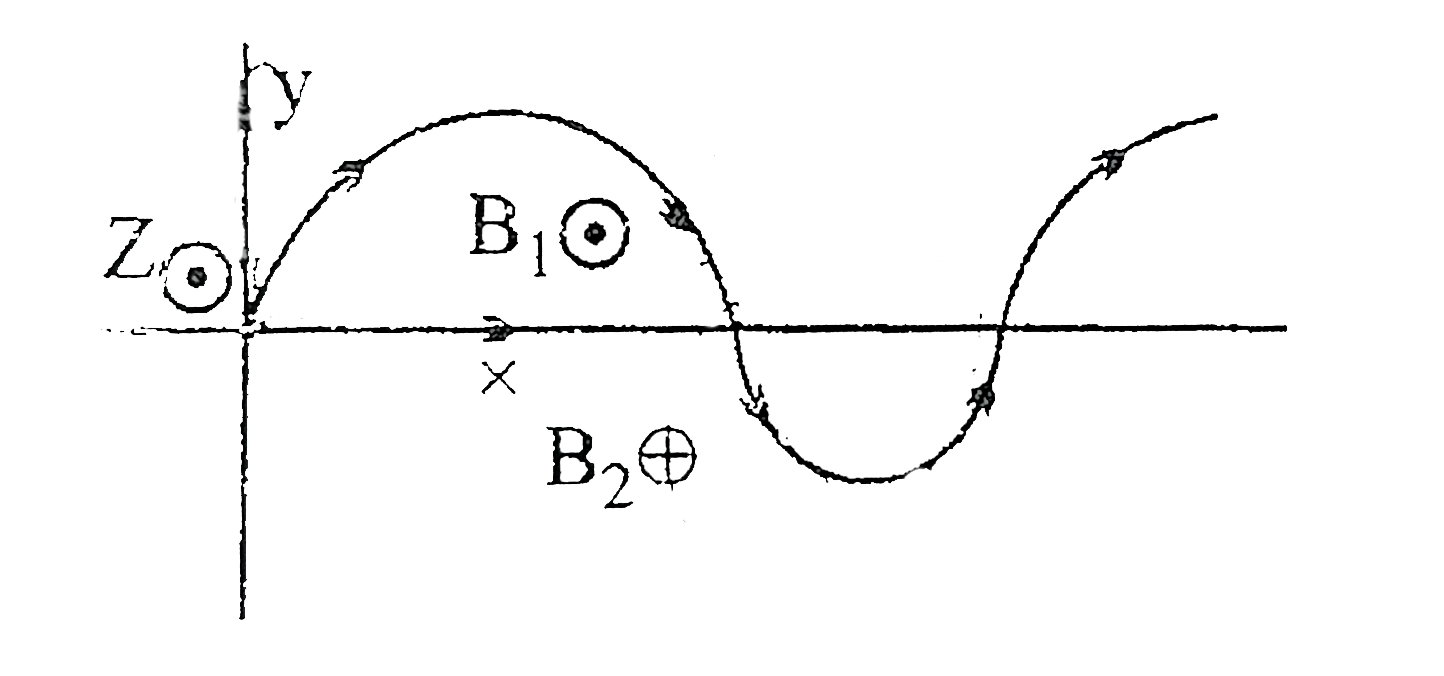At t=0 a charge q is at the origin and moving in the y-direction with velocity →v=vˆj. The charge moves in a magnetic field that is for y>0 out of page and given by B1ˆz and for y<0 into the page and given −B2ˆz. The charge's subsequent trajectory is shown in the sketch. From this information, we can deduce that

q>0and|B1|<|B2|
q<0and|B1|<|B2|
q>0and|B1|>|B2|
q<0and|B1|>|B2|
The correct Answer is:A
→F=q(→V×→B)
B=B1ˆk
V=Vˆj
Force at origin is along x axis.
ˆj׈k=ˆi so q should be positive.
r=mVqB
∵r2<r1
∴|B2|>|B1|
Topper's Solved these Questions
Similar Questions
What is the direction of the force acting on a charged particle q, moving with a velocity →v a uniform magnetic field →B ?
View SolutionA particle of specific charge 'α' is projected from origin at t=0 with a velocity →V=V0(ˆi−ˆk) in a magnetic field →B=−B0ˆk. Then : (Mass of particle =1 unit)
View Solution
Knowledge Check
A charged particle moves with velocity →v=aˆi+dˆj in a magnetic field →B=Aˆi+Dˆj. The force acting on the particle has magnitude F. Then,
AF=0,ifaD=dA.BF=0,ifaD=−dA.CF=0,ifaA=−dD.Df∝(a2+b2)1/2×(A2+D2)1/2A charged particle moving along +ve x-direction with a velocity v enters a region where there is a uniform magnetic field B0(−ˆk),omx=0→x=d. The particle gets deflected at an angle θ from its initial path. The specific charge of the particle is
 AvcosθBdBvtanθBdCvBdDvsinθBd
AvcosθBdBvtanθBdCvBdDvsinθBdThe force acting on a charge 'q' moving with a velocity V in a magnetic field of induction B is given by
Aq→V×→BB→V×→B)qCq(→V×→B)D(→V.→B)q
If a charge particle (q) inters into the magnetic field at origin with velocity v0ˆi, then find the maximum possible positive x co-ordinate of particle if mag- netic field is given as
B=B0x(−ˆk)x>0
=0x<0
View SolutionElectric field and magnetic field in a region of space are given by(Ē= E_0 hat j). and (¯¯¯B=B0ˆj). A charge particle is released at origin with velocity (¯v=v0ˆk) then path of particle is
View SolutionA portion is fired from origin with velocity →v=v0ˆj+v0ˆk in a uniform magnetic field →B=B0ˆj. In the subsequent motion of the proton
View SolutionA charged particle of specific charge (charge/mass) α released from origin at time t=0 with velocity →v=v0(ˆi+ˆj) in uniform magnetic field →B=B0ˆi. Coordinates of the particle at time t=π/(B0α) are
View SolutionA conductor AB of length l moves in xy plane with velocity →v=v0(ˆi−ˆj). A magnetic field →B=B0(ˆi+ˆj) exists in the region. The induced emf is
View Solution